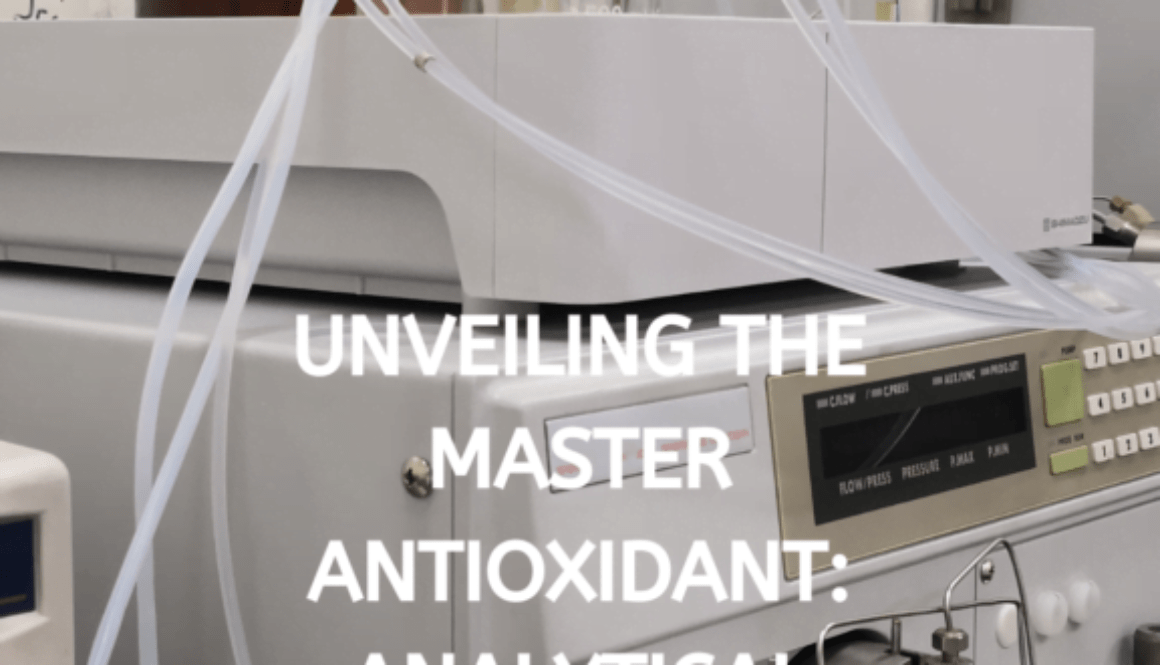UNVEILING THE MASTER ANTIOXIDANT: ANALYTICAL TECHNIQUES FOR GLUTATHIONE DETECTION
TO ORDER GLUTATHIONE CONTACT VIA WHATSAPP – +91-8090113353 OR VIA EMAIL – info@rass-biosolution.com

Glutathione , often called the “master antioxidant,” plays a pivotal role in maintaining optimal health by protecting cells from oxidative damage. As one of the most important antioxidants in the body, glutathione helps to neutralize harmful free radicals, supports the immune system, and aids in detoxification. Its role in cellular protection makes it a vital molecule in understanding and preventing chronic diseases such as cancer, cardiovascular disorders, and neurodegenerative diseases like Alzheimer’s. Accurate detection and quantification of glutathione levels are therefore crucial for research and clinical diagnostics.
In this blog, we will explore the various analytical techniques used to detect glutathione, shedding light on the methods that help scientists and healthcare professionals understand its levels and effectiveness in disease prevention.
What is Glutathione?
Glutathione is a tripeptide composed of three amino acids: glutamine, cysteine, and glycine. It exists in two forms within the body: reduced glutathione (GSH) and oxidized glutathione (GSSG). Reduced glutathione is the active form that neutralizes free radicals, while oxidized glutathione occurs when GSH loses an electron after combating oxidative stress.
The balance between these two forms of glutathione is a key indicator of oxidative stress levels in the body. Maintaining a high ratio of GSH to GSSG is essential for cell health and overall well-being. Understanding how to accurately measure glutathione in its various forms is critical for diagnosing and monitoring diseases where oxidative stress plays a major role.
Analytical Techniques for Glutathione Detection
Various analytical methods are employed to measure glutathione levels with precision. The choice of technique depends on the sample type, required sensitivity, and the specific application. Below are the most common methods used:
1. High-Performance Liquid Chromatography (HPLC)
HPLC is one of the most reliable techniques for quantifying glutathione. By separating different components of a sample based on their chemical properties, HPLC can provide accurate measurements of both reduced and oxidized forms of glutathione. This technique is widely used in laboratory settings and allows for the analysis of complex biological samples such as plasma, urine, or tissue extracts.
2. Fluorescent Detection
Fluorescent detection methods exploit the ability of glutathione to emit fluorescence under specific light conditions. Researchers often use fluorescent probes or dyes that bind specifically to glutathione, enabling the precise detection of its levels. This method is sensitive and can even be used in live cell imaging to observe real-time changes in glutathione levels.
3. Mass Spectrometry (MS)
Mass spectrometry provides a high level of precision and sensitivity when analyzing glutathione. It can detect glutathione at very low concentrations and identify both the reduced and oxidized forms. MS is particularly useful for complex samples where other methods may struggle to differentiate between similar molecules. It can also provide detailed information about glutathione metabolites, which is helpful in toxicology and pharmacokinetic studies.
4. Enzymatic Assays
Enzymatic assays are one of the simplest and most cost-effective methods for glutathione detection. These assays typically involve enzymes like glutathione reductase or glutathione peroxidase, which interact with glutathione and produce a measurable change in absorbance or color. These assays are often used in high-throughput screenings and are well-suited for clinical applications.
5. Electrochemical Sensors
Electrochemical sensors are emerging as a promising tool for real-time monitoring of glutathione levels. These sensors detect changes in electrical properties as glutathione interacts with the sensor’s surface. They offer a portable and non-invasive way to measure glutathione levels, making them ideal for continuous health monitoring.
Conclusion
The detection of glutathione is critical for understanding the role it plays in maintaining cellular health and combating oxidative stress. Accurate measurements help in diagnosing a range of diseases, monitoring treatment effectiveness, and advancing research in cell biology, pharmacology, and toxicology.
At RASS BioSolution, we are committed to providing cutting-edge solutions for the detection and analysis of vital biomarkers like glutathione. With our expertise in bioanalysis, we help researchers, clinicians, and healthcare professionals gain valuable insights into the antioxidant defense systems and their role in human health.
Explore our services today to learn more about how we can assist with your glutathione detection needs
